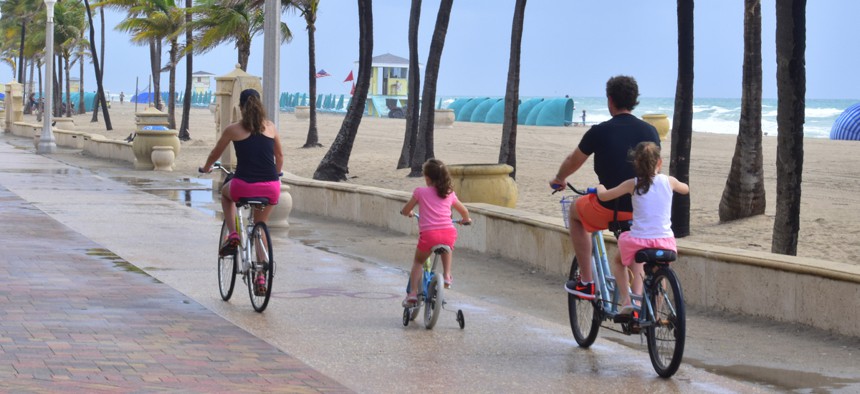Tourism Budget Cuts Are a Losing Proposition for States—Especially in 2017

Hollywood Beach, Florida Shutterstock

Connecting state and local government leaders
The president of the U.S. Travel Association outlines the case for what state lawmakers are missing about tourism dollars, and why “travel promotion is one of the best returns on public investment.”
State and local governments across the country are tightening their belts, and tourism promotion is often the first line item on the fiscal chopping block. Many state tourism, convention and visitor offices have found themselves caught in the budget crosshairs for the past year, most recently Florida, Texas and Missouri. Despite the view of some misinformed lawmakers, though, travel is serious business for state economies—and travel promotion is one of the best returns on public investment.
Multiple economic studies, including the U.S. Travel Association’s Power of Travel Promotion series, have proven that a little self-promotion goes a long way for states, setting in motion a “virtuous cycle” of benefits. States that invest in promoting themselves to potential business and leisure travelers do, in fact, attract more visitors. Those visitors spend money on food, lodging, transportation and shopping during their trips, which fuels business growth—particularly small businesses—and, importantly for the budget-conscious, crucial tax revenue. This, in turn, results in the revitalization of neighborhoods, investment in infrastructure, and other improvements that greatly increase local residents’ quality of life.
The shorter version: cuts to tourism promotion threaten millions of jobs and put billions in state tax revenue on the line.
It doesn’t help that politicians singling out tourism funding for elimination are egged on by ideological organizations have taken it upon themselves to fan the flames. The Mackinac Center for Public Policy—a Michigan-based advocacy group funded by the Koch brothers—recently released a paper claiming that all funding for state destination marketing is a waste of money.
A wellspring of economic data easily refutes Mackinac’s claims. One leading economist at the University of Pennsylvania has held that Mackinac’s methods are fundamentally flawed. And according to a recent working paper produced by researchers at Clemson University, every $1 invested in state tourism budgets generates $15 in gross state product—and nearly $51 in tourism spending, which supports local public services and jobs.
Tourism promotion campaigns have been enormously helpful for citizens of states like New Mexico and cities like Nashville. On the flipside, there are also some stark examples of how quickly a state’s economy can suffer when lawmakers cut or eliminate tourism promotion funding.
Pennsylvania, which recently slashed its tourism budget—just $2 million per year in 2015/2016, down from over $35 million annually from 2006-2009—has so far lost $600 million in travel-generated state and local tax revenues. Colorado, however, stands as the most chilling case study: within two years of repealing its tourism funding, in 1993, Colorado lost 30 percent of its U.S. visitor market share, which translated into over $1.4 billion lost for the state per year. Within a few years, that number had risen to $2.4 billion lost annually.
These stories represent real peoples’ jobs lost and real harm to communities—and this was before the turbulent geopolitics of 2017. Current events, and particularly negative perceptions around U.S. security policies, have led some global travelers to second-guess the U.S. as a destination—something that could be disastrous for local workers and state balance sheets alike, since international travelers to the U.S. directly supported 1.2 million American jobs and generated over $23 billion in federal, state and local tax revenue last year. State tourism offices have led the effort with innovative campaigns to counter those negative perceptions and spread a much-needed message of welcome to the U.S. Now would be an especially bad time to hamper those efforts.
There’s no good time to cut state tourism budgets, but right now would be particularly unwise. American destinations, both urban and rural, large and small have for months concentrated on sending a sustained message of welcome to global travelers, and reminding domestic travelers of all the opportunities for visitors available at home. Tourism promotion funding is crucial to ensuring strong communities all over America—now more than ever. Elected officials should take note and support the state tourism offices that do this good work.
Roger Dow is the president and CEO of the U.S. Travel Association; he leads the National Council of State Tourism Directors, which includes state tourism officials from every state.

NEXT STORY: Charlottesville May Put the Brakes on Campus Free Speech Laws




